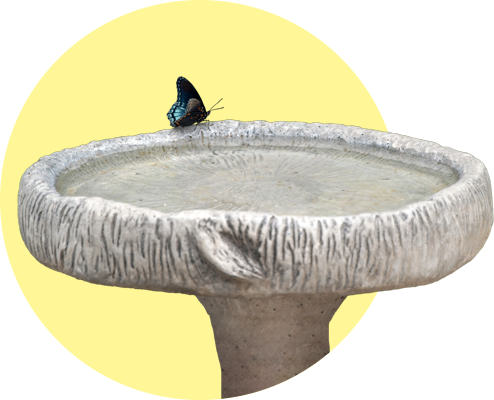This and That
Do You Dig It?
In The Shadow of Shiloh, p. 36
Associates for Biblical Research has conducted three archaeological excavations in Israel since the 1970s. Over and over, the archaeological evidence correlates with the biblical accounts or helps us better understand the Bible’s background. Their excavations at Shiloh have been no different.
Over 80% of Shiloh still waits to be unearthed. Want to join this fantastic adventure? Who knows, maybe you’ll help further uncover the city gate—or discover something even greater! Find out how to volunteer at the Shiloh excavations by visiting DigShiloh.org.
Bee My Neighbor

Meant To Bee, p. 44
If you’re a little nervous about getting up close and personal with bees, you can still help pollinators—and your garden or flowerbeds—by filling your yard with provisions they can’t resist. Here are a few simple steps for creating a perfect habitat for pollinators.
Search online for flowers native to your area. Planting a variety of native flowers as well as a mixture of annuals and perennials provides both honeybees and native pollinating species food for all season long.

Pollinators need water, too. Give them a place to stop and grab a drink by setting out a small tray of water with pebbles, or even set up a birdbath for birds, bees, and other insects to use.

During the winter, some species of insects like to nest in thick clumps of grass or leaves or in the hollow stems of dead plants. You can provide them a warm place to hide by waiting until spring to clean up last summer’s landscaping.
Arachnid Recollections
by Kaitlyn Iocco, managing editor
Faux Flyers, p. 22
At five years old, I wanted to be an entomologist when I grew up. I loved going outside with my dad to look under rocks for pill bugs, centipedes, and other creepy crawlies—even spiders. Yet when I watched the animated Charlotte’s Web movie, I remember being disturbed by the ending when Joy, Aranea, and Nellie fly away. Maybe it was the goodbye that made me feel melancholy, or simply the strange idea of flying spiders that unnerved me.
Like some of the other faux flyers you read about on page 22, spiders don’t fly in the conventional sense. They take to the sky by ballooning. Spider babies float away to avoid being eaten by other newly hatched spiders in the nest. Adult spiders balloon in search of food, mates, and nesting places.
Before liftoff, spiders raise a leg or two into the air to test out atmospheric conditions. Their legs are covered in tiny sensory hairs that measure the wind and the current from earth’s electric field. If conditions are favorable, a spider creates a parachute by shooting thin strands of silk into the air. The strands are charged with a static electricity, which interacts with electricity in the air, sending the spider skyward. Ballooning spiders can drift as far as 1,000 miles.
Although I didn’t grow up to be an entomologist, on the Answers magazine team, I get to learn about all kinds of creatures in God’s creation—great and small, creepy and crawly.
Answers Magazine
July–September 2023
The undercurrent of Critical Race Theory is tugging students away from God’s Word. How should parents respond?
Browse IssueRecommended Resources

Answers in Genesis is an apologetics ministry, dedicated to helping Christians defend their faith and proclaim the good news of Jesus Christ.
- Customer Service 800.778.3390
- Available Monday–Friday | 9 AM–5 PM ET
- © 2025 Answers in Genesis







